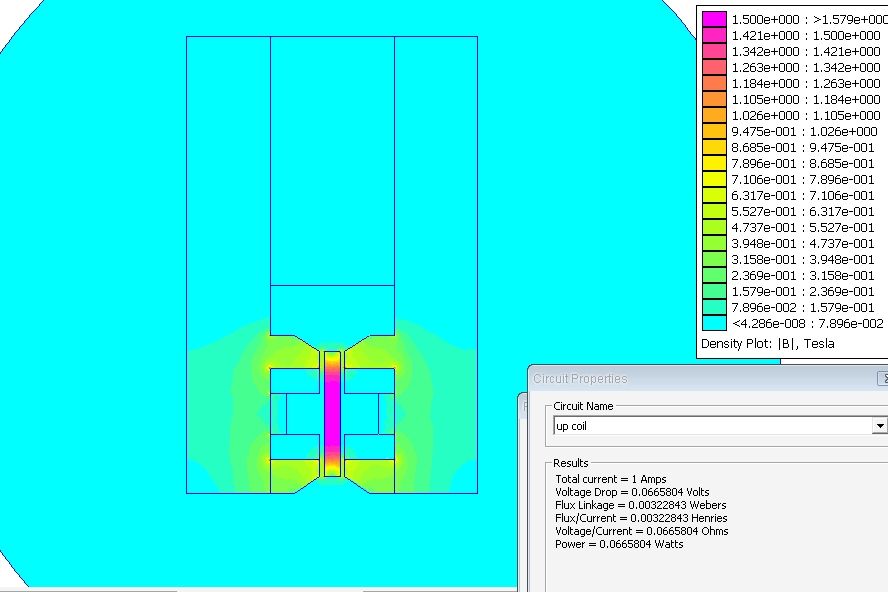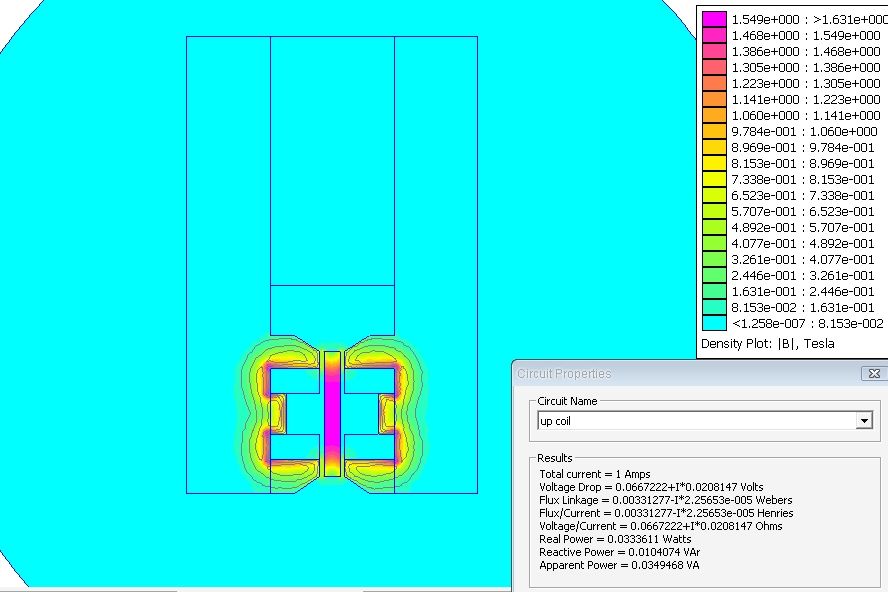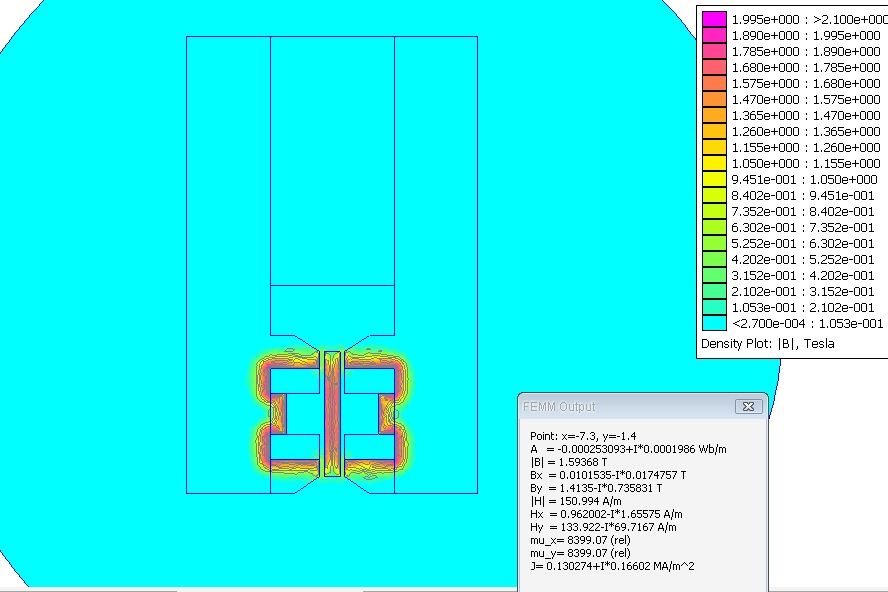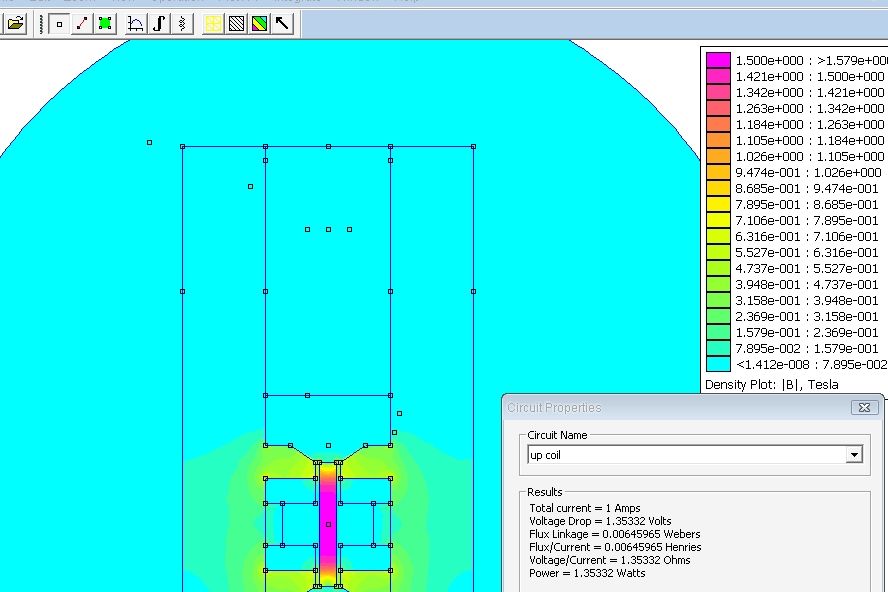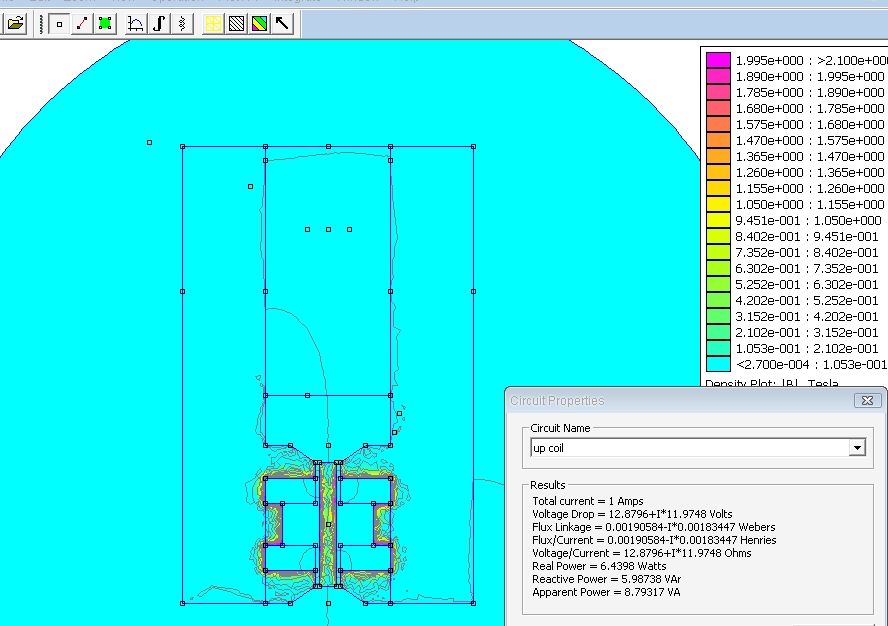Here I will explain some mods in a Presto 1-C,they concern 3 parts of the head: Magnet, coils and damping.
I think it can apply to the 1-D as well, as they are not too different.I'm not an engineer, so If an educated reader or anybody, notes that something is wrong or can be said better or whatever,corrections are wery wellcome
This mods are reversible, so I keep the parts and can convert it back to its primitive configuration if feeling nostalgic.
1-MAGNET
As far as I know this magnet is of the alnico type, I don't know if in my unit is weak or not,It seems to have power but I was expecting more output.
In this magnetic simulation shows Alnico 5,the most powerfull of alnicos avalaible in my simulator.Alnico8 yields 0.7 Tesla in the armature, Alnico6 1Tesla and Alnico5, 1.25Tesla.
Armature and polepieces have similar potential.
The output window display data concerning the armature.is simulated as iron, as I dont know which material is it.anybody knows?:
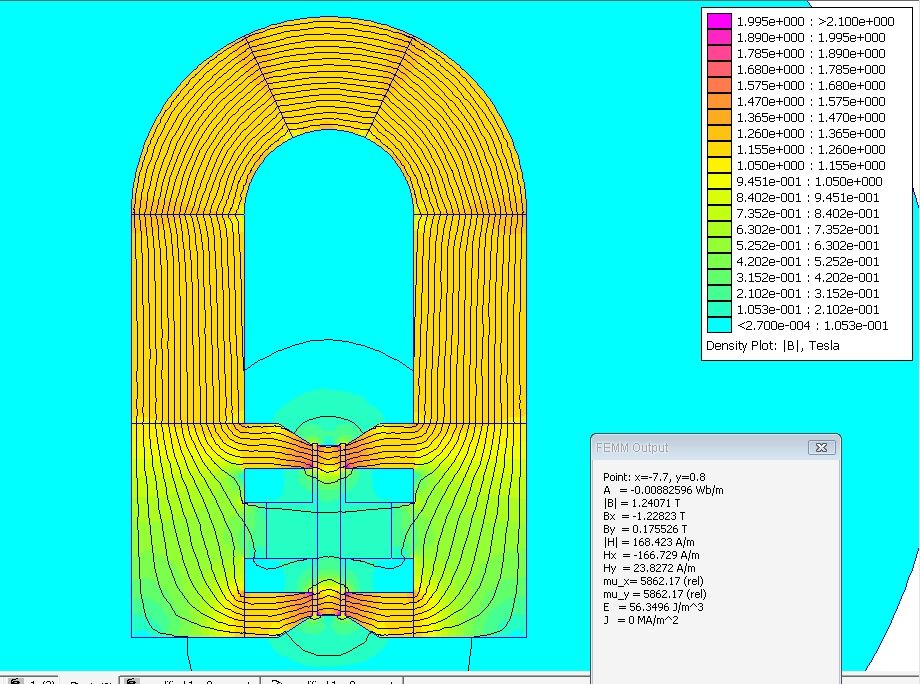
one cheap 2mmx10mmx30mm,neodymium brings barely more flux density than the whole horseshoe alnico, yields 1,32 Tesla in the armature:
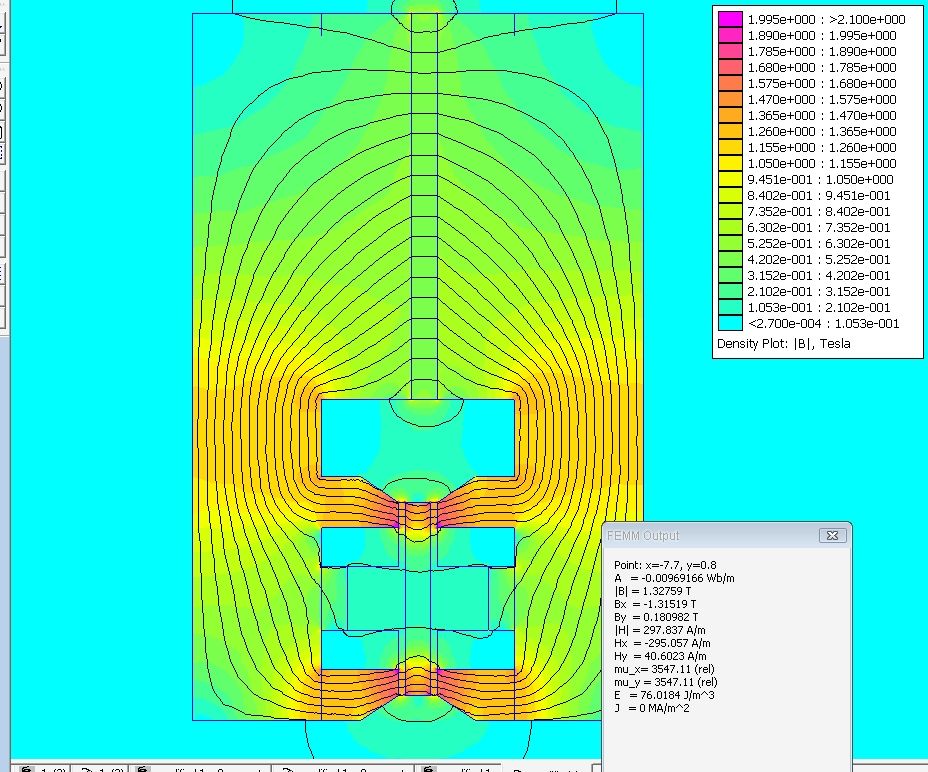
Care must be taken with the neodymium as they tend to magnetize every iron tool or instrument around, especially if it jumps and knocks his victims.Here, 8 of this magnets nearly reach 2 Tesla,
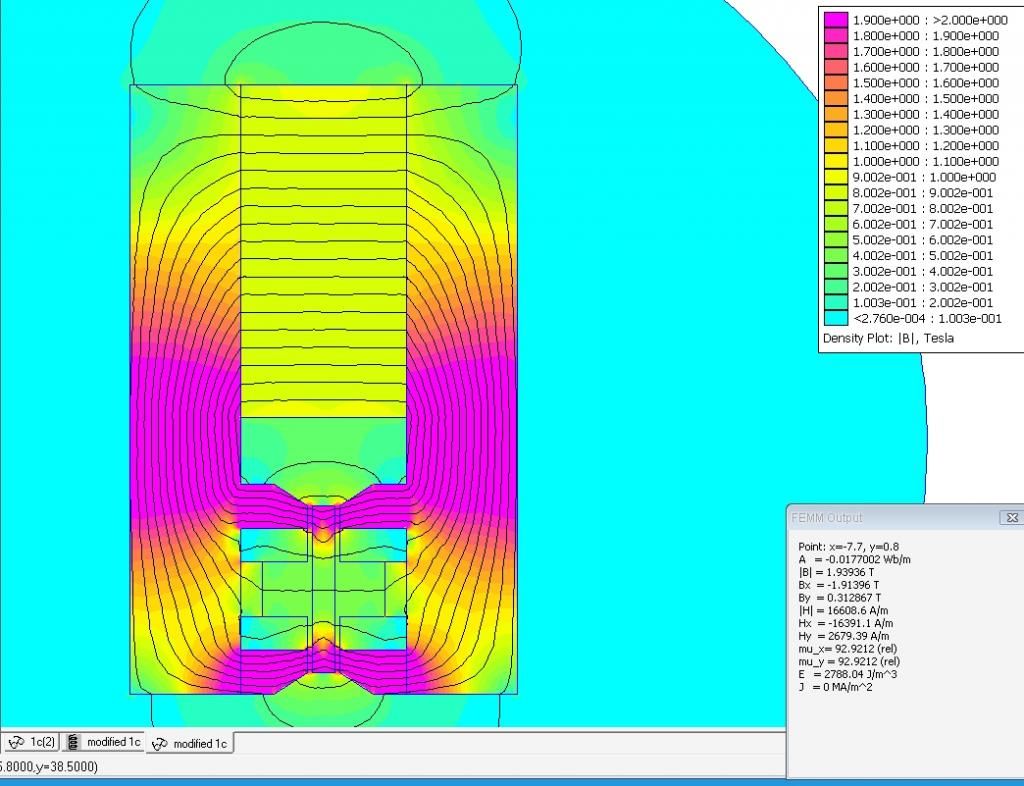
the head without shell, looks like this:
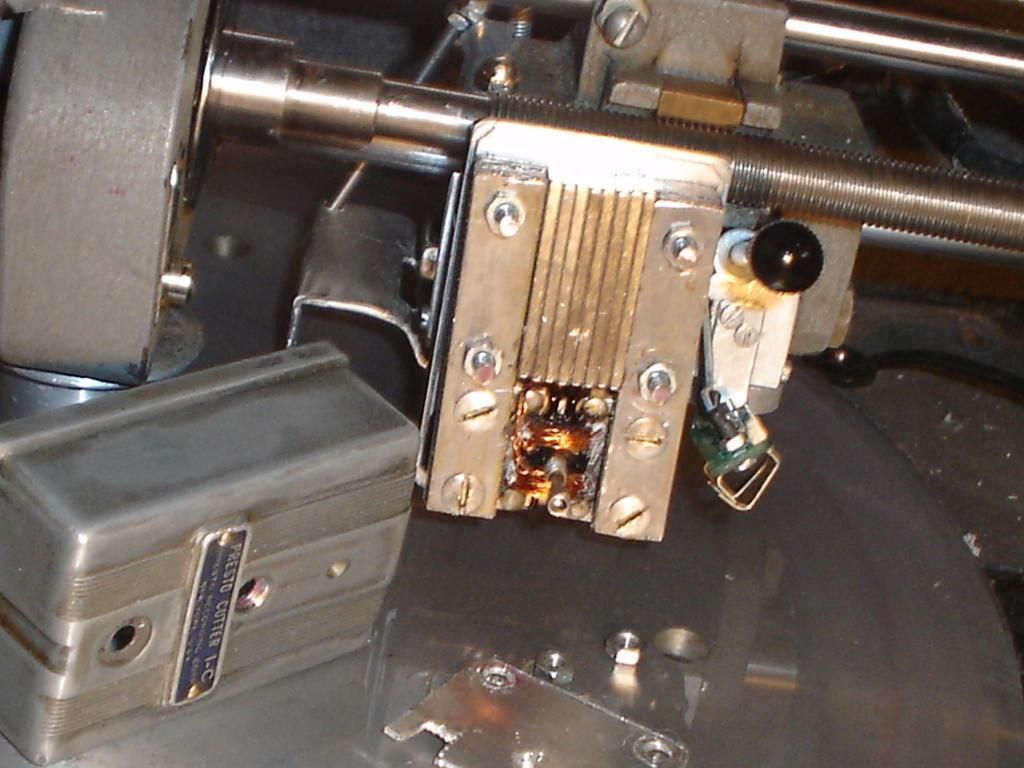
The magnets:
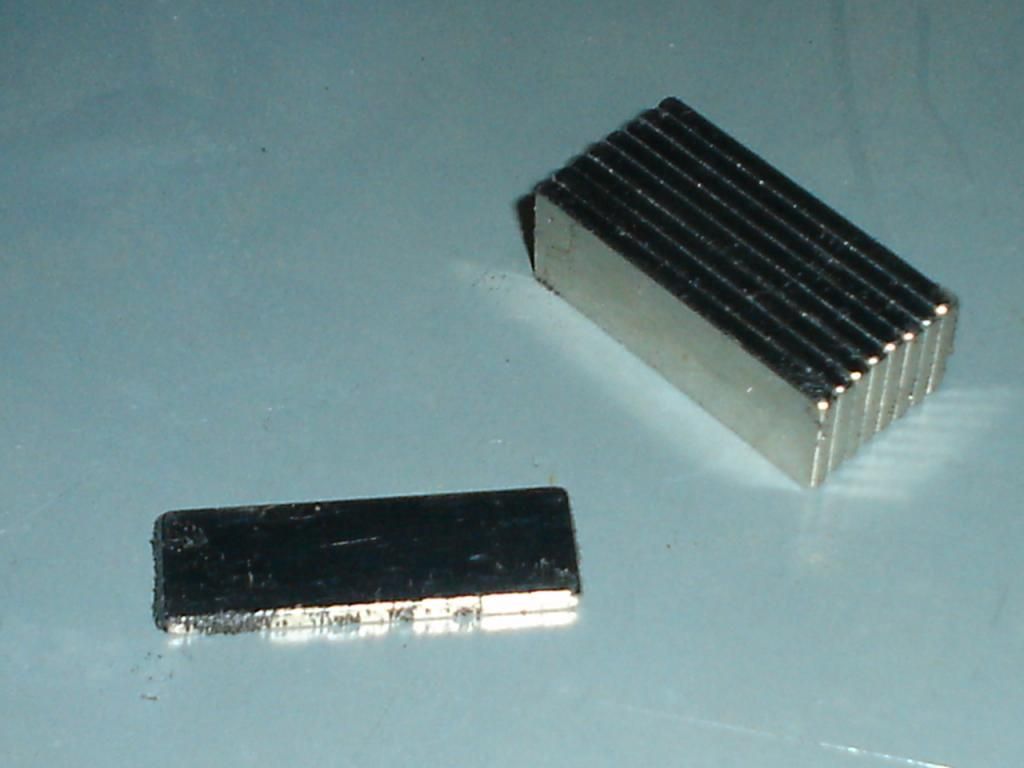
The magnets are linked to the polepieces with two parts made with laminated iron, comig from a scrap transformer.They are screwed in the polepieces in the same way the magnet was.Back side in the pic is front in the head:
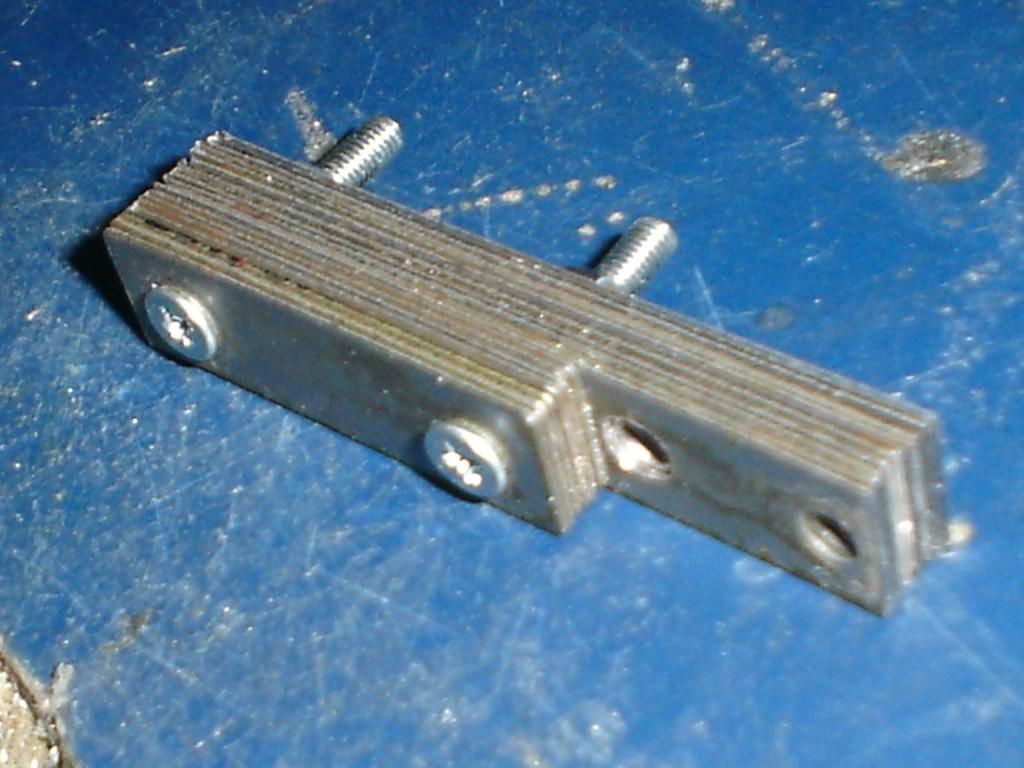
I had to remove a connections thing to house the magnets.Instead of laminated Iron, a solid iron bar will act the same, as static magnetic fields dont generate eddy currents and the coils magnetic circuit is conducted thru the polepieces.
One point I was worried about is where are the limits of the magnetic flux feed in the polepieces,to aviod saturation in the armature, as it will affect the way is driven by the coils.
but, for my surprise,I noticed no big distortion with the new magnet.I wonder whats happening, how a linear changing magnetic field interacts with an metal magnetically saturated,in which the behaviour will be not linear.But the resutant force seems proportional to the drive...
I had no instruments to measure distortion, but audio is nice, for a 70 years old head, and sinewaves good looking.
Maybe because this operations are vectorial,direction dependant, or because the simetrical arrangment of the coils.Any clue why I dont get saturation distortion?
I am positive that the armature is saturated, nearly 2 Teslas, acording with simulation.
Anyway, if is not broken, dont repair it.All what I experience with this change is a monster sensitivity.It allowed me to adjust the gap a little wider and use shorter stylus.
More to come soon,

